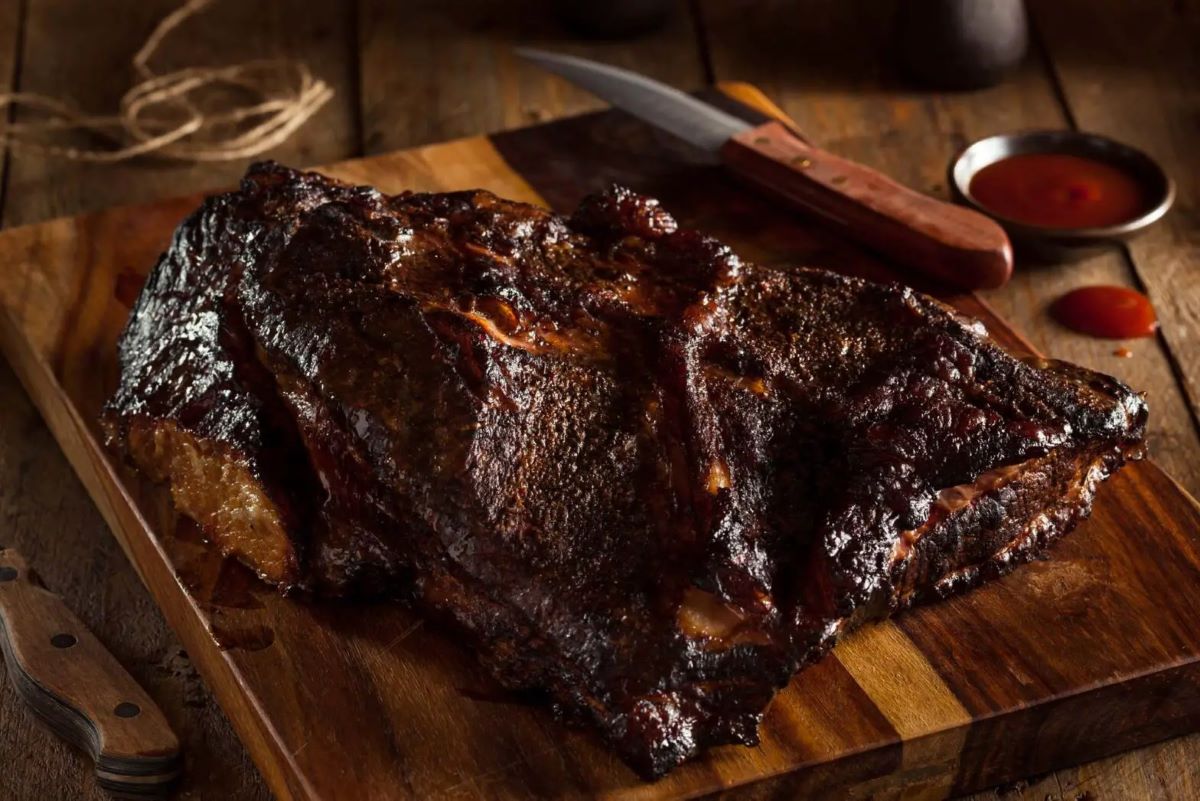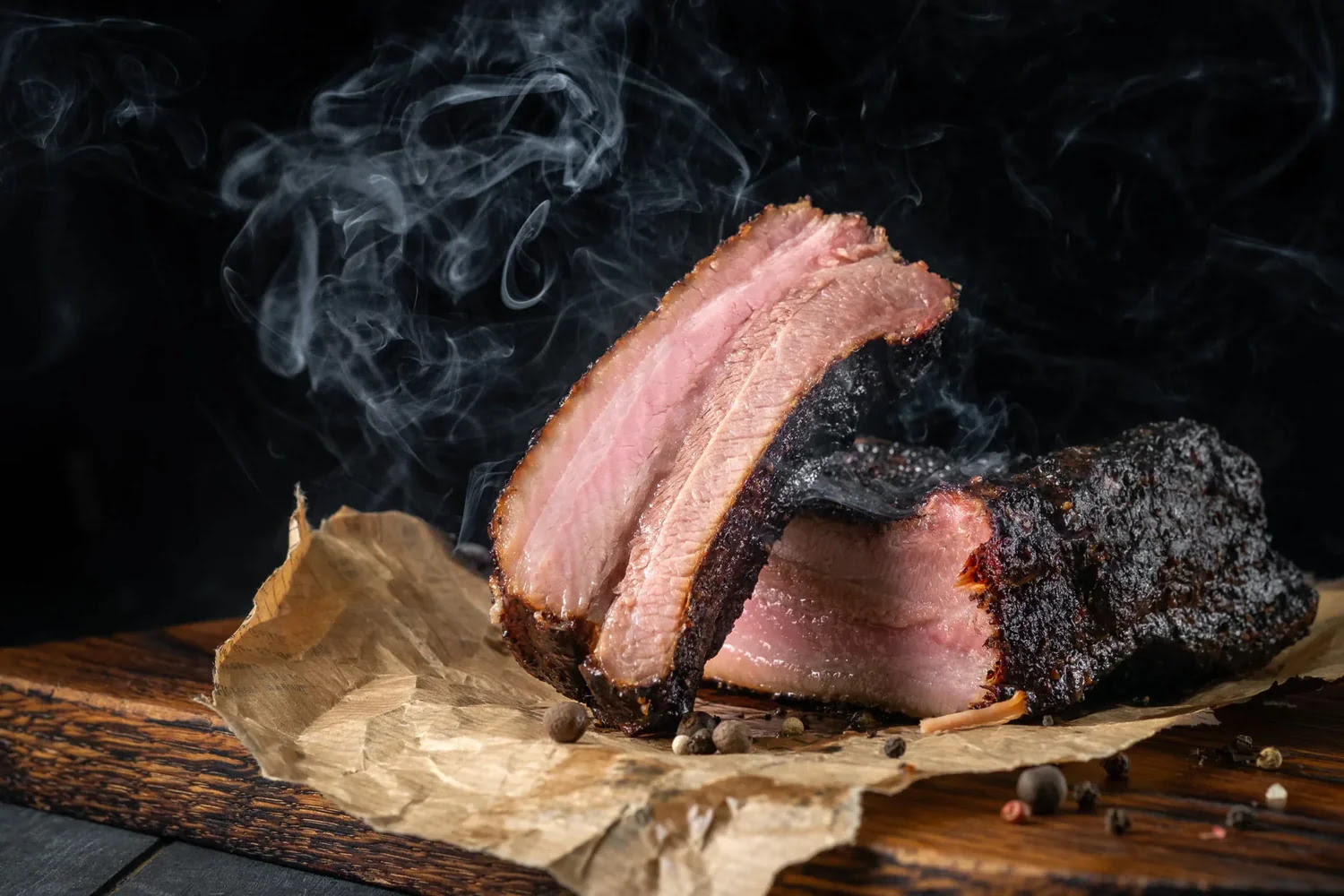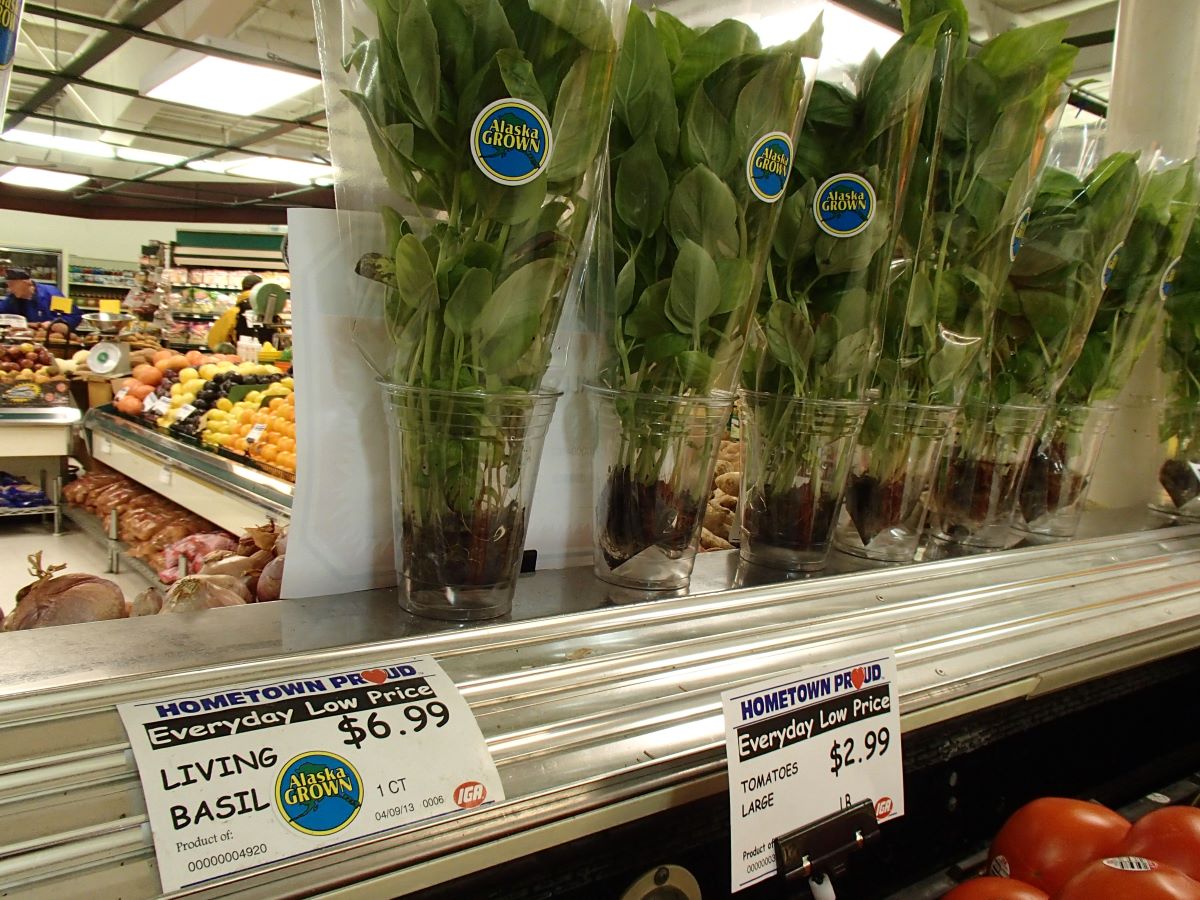

Articles
How To Store A Brisket
Modified: August 17, 2024
Learn the best methods for storing a brisket in this informative article. Find out how to keep your brisket fresh and delicious until you're ready to enjoy it.
(Many of the links in this article redirect to a specific reviewed product. Your purchase of these products through affiliate links helps to generate commission for Storables.com, at no extra cost. Learn more)
Introduction
Brisket, a flavorful and tender cut of meat, is a staple in many cuisines, particularly in barbecue. Whether you’ve cooked a mouthwatering brisket for a special occasion or have some leftovers from a weekend cookout, knowing how to properly store it is essential to maintain its taste and quality. In this article, we will guide you through the step-by-step process of storing brisket to ensure it stays fresh and delicious.
Properly storing brisket involves several factors, such as choosing the right cut, preparing it correctly, selecting the appropriate storage container, and using the right wrapping technique. We’ll cover all these aspects and provide you with tips to extend the shelf life of your brisket. So, let’s dive in and learn how to store a brisket properly.
Key Takeaways:
- Properly storing brisket involves choosing the right cut, preparing it with seasoning, and selecting the appropriate storage container and wrapping technique. Refrigerate or freeze to maintain its freshness and flavor.
- To keep brisket fresh, handle it with care, avoid temperature fluctuations, and use quality storage materials. Properly thaw and reheat for delicious results, ensuring every bite is as tasty as the day it was cooked.
Read more: How To Store Brisket In Fridge
Choosing the Brisket
When it comes to choosing a brisket, there are a few key factors to consider. Firstly, you’ll want to select a fresh and high-quality brisket. Look for one that has a good amount of marbling, as this will contribute to its tenderness and flavor.
When selecting a brisket, you’ll also have to choose between a flat cut and a point cut. The flat cut, also known as the first cut or “lean” cut, is leaner and has less fat. It is ideal for those who prefer a leaner meat option. The point cut, on the other hand, is more marbled and has more fat, making it juicier and more flavorful. It is perfect for those who enjoy a richer and more indulgent brisket.
Consider the size of the brisket as well. Depending on the occasion and the number of people you are serving, you may opt for a smaller or larger brisket. Keep in mind that larger briskets generally take longer to cook and may require more storage space.
Lastly, consider the source of your brisket. If possible, choose a brisket from a reputable butcher or a trusted supplier. This will ensure that you are getting a fresh and high-quality cut of meat.
Preparing the Brisket
Before storing the brisket, it’s important to properly prepare it to ensure optimal flavor and quality. Here are the steps to follow:
- Trimming: Start by trimming any excess fat from the brisket. This will help prevent the meat from spoiling quickly and also allow for better heat distribution during cooking.
- Seasoning: Apply your desired seasoning or rub to the brisket. Whether you opt for a classic salt and pepper rub or a more flavorful spice mix, make sure to evenly coat the meat to enhance its taste.
- Cooking: Cook the brisket according to your preferred method. This can involve smoking, roasting, or slow cooking. The cooking process will depend on your recipe and preference, but make sure to fully cook the brisket to ensure safety and tenderness.
- Cooling: Once the brisket is cooked, allow it to cool to room temperature. This step is essential before storing the brisket to prevent condensation and moisture buildup.
By following these steps, you’ll have a perfectly seasoned and cooked brisket ready to be stored for later use.
Selecting the Storage Container
Choosing the right storage container is crucial to maintain the quality of your brisket. Here are some options to consider:
- Airtight Containers: Opt for plastic or glass containers with airtight lids. These containers will help keep your brisket protected from air exposure, preventing it from drying out and absorbing any unwanted smells from the refrigerator.
- Ziplock Bags: Another convenient option is to use heavy-duty, freezer-safe Ziplock bags. Ensure that the bags are sturdy and properly sealed to prevent any leakage or air exposure.
- Aluminum Foil: If you’re storing a smaller portion of brisket, wrapping it tightly in aluminum foil can work well. This creates a barrier against air and helps retain moisture.
When choosing a container, make sure it is large enough to accommodate the size of your brisket. It’s a good idea to separate large briskets into smaller portions for more manageable storage.
Labeling the storage container with the date of storage is also recommended. This way, you can easily keep track of how long the brisket has been stored and ensure that you consume it within a safe timeframe.
Wrapping and Storing the Brisket
Proper wrapping is essential to maintain the freshness and flavor of your brisket during storage. Here’s how to wrap and store your brisket:
- Allow the Brisket to Cool: Before wrapping, ensure that the brisket has cooled down to room temperature. This helps prevent the accumulation of excess moisture.
- Wrap the Brisket: Place the cooled brisket in the center of a large piece of plastic wrap or aluminum foil. Carefully fold the wrap or foil over the brisket, making sure it is tightly sealed to prevent any air or moisture from getting in or out.
- Double Wrapping (Optional): For added protection, you can double wrap the brisket by repeating the wrapping process with an additional layer of plastic wrap or foil.
- Place in the Storage Container: Transfer the wrapped brisket to an airtight container or sealable bag, ensuring that it fits comfortably without being squished or compressed.
- Store in the Refrigerator or Freezer: Place the container with the wrapped brisket in the refrigerator if you plan to use it within a few days. If you want to store the brisket for a longer period, place it in the freezer.
Remember to handle the brisket with care during the wrapping process to avoid any damage or tearing to the wrap or foil. A properly wrapped brisket will stay fresh and maintain its flavor for an extended period.
After smoking or cooking a brisket, let it cool to room temperature before wrapping it tightly in foil or plastic wrap. Store it in the refrigerator for up to 4 days or freeze for longer storage.
Read more: How To Store Leftover Brisket
Refrigerating the Brisket
Refrigeration is a common method for storing brisket when you plan to use it within a few days. Here are some tips for refrigerating your brisket:
- Temperature: Set your refrigerator temperature to 40°F (4°C) or below to ensure optimal food safety and prevent bacteria growth.
- Placement: Place the wrapped brisket in the coldest part of your refrigerator, such as the bottom shelf or the meat drawer. This will help maintain a more consistent temperature and minimize the risk of temperature fluctuations.
- Duration: Refrigerated brisket can typically be stored for up to 3-4 days. It is important to consume the brisket within this timeframe to ensure its freshness and safety.
- Non-Food Odor: Keep in mind that brisket can absorb odors easily. To prevent this, store the brisket in an airtight container and away from strong-smelling foods like onions and garlic. You can also use odor-absorbing substances like baking soda in the refrigerator to minimize any unwanted smells.
Always check the quality of the brisket before consuming it. If you notice any signs of spoilage, such as an off smell, mold, or unusual discoloration, it’s best to discard it to avoid any potential foodborne illnesses.
Freezing the Brisket
If you have a surplus of brisket or want to store it for an extended period, freezing is the best option. Follow these steps to freeze your brisket:
- Cool the Brisket: Allow the cooked brisket to cool completely to room temperature before freezing. This helps maintain the texture and flavor of the meat.
- Wrap for Freezing: Wrap the cooled brisket tightly in a layer of plastic wrap or aluminum foil. Ensure that it is well-sealed to protect it from freezer burn and to prevent air from entering.
- Extra Protection: For added protection, place the wrapped brisket inside a freezer-safe plastic bag or airtight container. This provides an extra layer of insulation and prevents any potential leaks in the freezer.
- Labeling: Before placing the brisket in the freezer, label the packaging with the date of freezing. This helps you keep track of how long it has been frozen.
- Freeze: Position the wrapped and labeled brisket in the coldest part of your freezer, ideally at 0°F (-18°C) or below. This ensures the preservation of the brisket’s quality.
When properly stored in the freezer, brisket can stay fresh for up to 2-3 months. However, for the best taste and texture, it is recommended to consume it within the first month of freezing.
When you’re ready to use the frozen brisket, be sure to thaw it properly before reheating. Avoid thawing the brisket at room temperature, as this can promote bacterial growth. Instead, thaw it slowly and safely in the refrigerator overnight or use the defrost function on your microwave if you need to thaw it quickly.
Remember, once brisket has been thawed, it should not be refrozen unless it has been thoroughly cooked. So, plan your portions accordingly to minimize waste and ensure the best taste and quality.
Thawing and Reheating the Brisket
When it’s time to enjoy your frozen brisket, proper thawing and reheating techniques will help you retain its original taste and texture. Here’s how to thaw and reheat your brisket:
- Thawing: Ideally, thaw your frozen brisket in the refrigerator overnight. Place the wrapped brisket on a plate or in a shallow dish to catch any potential drips. Slow thawing in the refrigerator ensures a more even thaw and minimizes the risk of bacterial growth. Allow approximately 24 hours for every 5 pounds of brisket.
- Quick Thawing: If you need to thaw the brisket more rapidly, you can use the defrost function on your microwave. Follow the manufacturer’s instructions for thawing meats, and be cautious to avoid partial cooking during the process. It’s important to note that quick thawing in the microwave may result in some loss of moisture and potential quality changes.
- Reheating: Once the brisket is fully thawed, you can reheat it using different methods, such as the oven, stovetop, or grill. To prevent the brisket from drying out, it’s recommended to use low heat and cover it with foil while reheating. Make sure the internal temperature reaches at least 165°F (74°C) to ensure it’s safe to eat.
- Slicing and Serving: After reheating, let the brisket rest for a few minutes before slicing. This helps to retain juices and ensures a tender and succulent texture. Slice the brisket against the grain for maximum tenderness and serve it with your favorite sides and sauces.
Remember, reheated brisket may not have the exact texture or taste as freshly cooked brisket, but with proper thawing and reheating techniques, you can still enjoy a delicious and satisfying meal.
Tips for Keeping the Brisket Fresh
To ensure the freshness and quality of your stored brisket, consider these helpful tips:
- Proper Handling: Always handle the brisket with clean hands and utensils to avoid introducing bacteria or other contaminants that can spoil the meat.
- Avoid Temperature Fluctuations: Maintain a consistent temperature in your refrigerator or freezer to prevent the brisket from spoiling. Avoid opening the refrigerator or freezer doors frequently to keep the temperature stable.
- Portion Control: Consider dividing larger briskets into smaller portions before storing. This allows you to thaw and use only the necessary amount, reducing waste and ensuring a longer shelf life for the remaining portions.
- Use Quality Storage Materials: Use high-quality plastic wrap, aluminum foil, or freezer bags that are designed for long-term storage in the freezer. This helps to prevent freezer burn and maintain the flavor and texture of the brisket.
- Avoid Freezer Overcrowding: Avoid overcrowding your freezer with too many items, as it can restrict airflow and lead to uneven freezing or inconsistent temperatures, affecting the quality of the brisket.
- Regularly Check the Temperature: Keep an eye on the temperature of your refrigerator and freezer to ensure they are operating at the recommended levels for food storage. This helps maintain the freshness of the brisket and other perishable items.
- Consume Within Recommended Timeframe: While properly stored brisket can last for several weeks or months in the freezer, it’s best to consume it within the recommended recommended timeframe for best taste and quality.
By following these tips, you can keep your brisket fresh and delicious for an extended period, ensuring that every bite is as tasty as the day it was cooked.
Read more: How To Store And Reheat Brisket
Conclusion
Storing a brisket properly is essential to preserve its flavor and quality, whether you’ve cooked a delicious brisket for a special occasion or have leftovers from a barbecue gathering. By following the steps outlined in this article, you can ensure that your brisket remains fresh and delicious for future enjoyment.
From choosing the right cut and preparing the brisket to selecting the appropriate storage container and wrapping technique, each step plays a crucial role in maintaining the brisket’s taste and tenderness. Whether you decide to refrigerate or freeze your brisket, following the recommended guidelines for temperature and packaging will yield the best results.
Remember to label your storage containers, practice proper hygiene while handling the brisket, and be mindful of temperature fluctuations. Portion control and regular monitoring of your refrigerator and freezer temperatures are also important factors to consider when storing brisket.
Thawing and reheating the brisket properly ensures that it retains its original flavor and texture. Whether you choose to slow thaw in the refrigerator or use a quicker method like the microwave, it’s important to always reheat the brisket to a safe internal temperature before serving.
By implementing these tips and techniques, you can enjoy the deliciousness of your brisket for an extended period. So the next time you have leftover brisket or want to plan ahead, feel confident in your ability to store and maintain its freshness.
Now that you have the knowledge and skills to store your brisket properly, you can savor the deliciousness of this mouthwatering cut of meat whenever you desire. So go ahead, cook that brisket with confidence, and enjoy it fresh or stored for later. Happy cooking!
Frequently Asked Questions about How To Store A Brisket
Was this page helpful?
At Storables.com, we guarantee accurate and reliable information. Our content, validated by Expert Board Contributors, is crafted following stringent Editorial Policies. We're committed to providing you with well-researched, expert-backed insights for all your informational needs.














0 thoughts on “How To Store A Brisket”